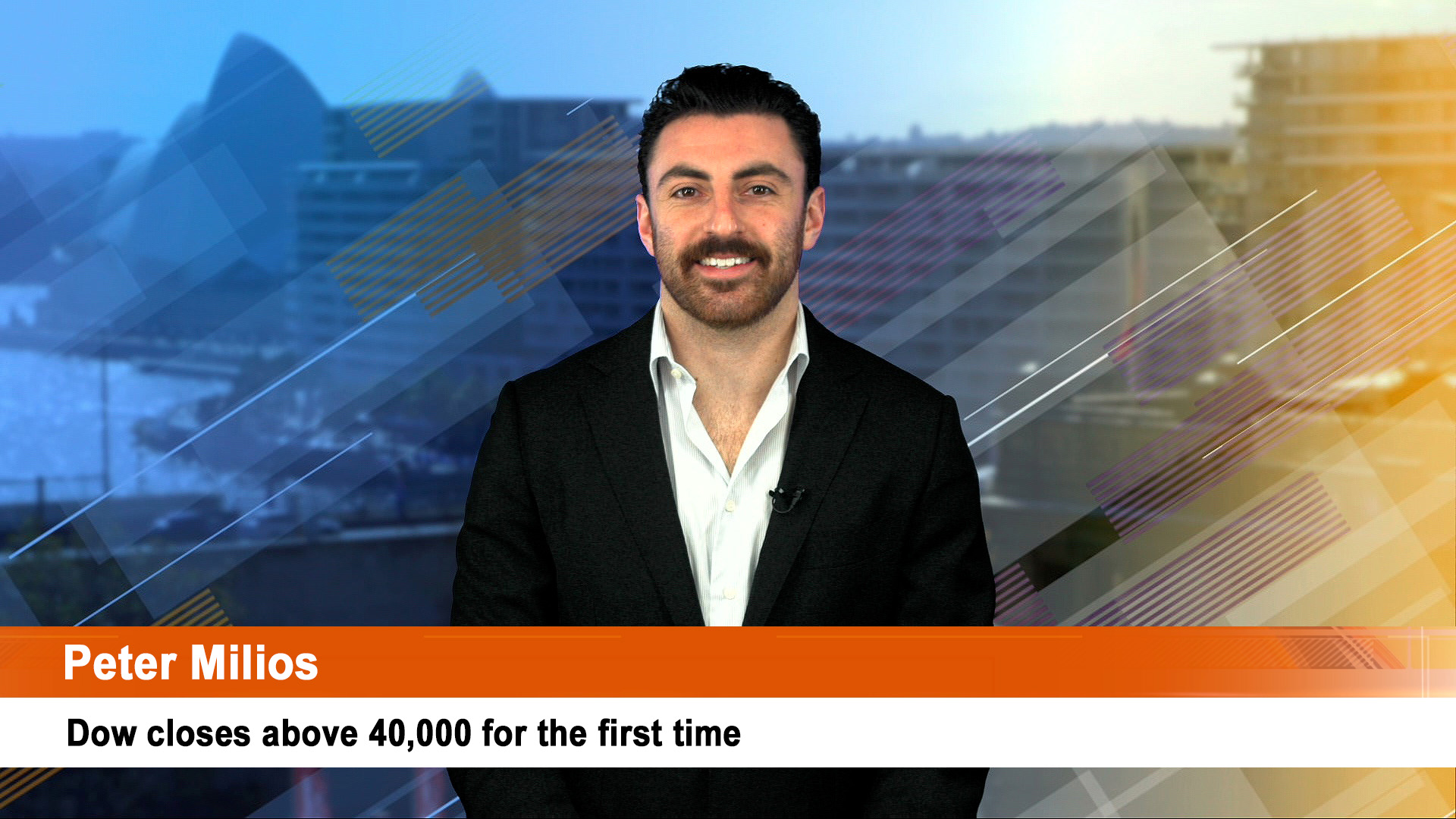Manny Anton: I'm Manny Anton for the Finance News Network, and today we are talking with Empire Energy Group, chief executive officer, Alex Underwood.
Empire Energy Group is a Sydney-based Australian oil and gas company, holding a hundred percent owned and operated assets in the Northern Territory's exciting and developing Beetaloo Basin. Empire is now working towards putting their Beetaloo assets into production.
Alex, welcome back to the Network. It's great to have you.
Alex Underwood: Good day, Manny. Good to be here.
Manny Anton: All right, why don't we start with the news today, in fact. So it's exciting times for Empire and the Beetaloo, but in particular, the Labor government has actually announced just today, its new Future Gas Strategy paper. And lo and behold, here we are, they've admitted we need gas, and we're going to need it for a while, and it will be the transition fuel. So what are your comments and what are your thoughts around that?
Alex Underwood: Yeah, I mean we're obviously delighted with today's news from the Australian federal government. We've had very strong support from the Northern Territory government over a number of years now, and we're very appreciative of that support. I think in the last couple of years since this new government came into place at the federal level, there has been some concern around investors as to the level of support from the federal government. We saw a significant market intervention a couple of years ago when the Ukraine war kicked off, to bring prices under control. But that did have a negative impact on obviously the substantial capital that's required to continue being invested in this industry to keep the gas flowing. And I think while this government has not been anti-gas, I think there just has been some ambiguity in their policy platform around gas.
And so today's announcement under the future gas strategy that Australia's going to need gas to 2050 and well beyond, and also the critical importance of gas for a range of factors, so supporting renewables through peaking power, manufacturing and ultimately heating and cooling and powering our homes, is fantastic news, and I think it's really going to help underpin investor confidence in this sector.
Manny Anton: Just to add to that, I also noticed in the discussion today from the government, they made a point of also saying we also have a responsibility to keep our Asian partners and our international partners supplied with that fuel, which will allow them to also move towards renewables, which I thought was interesting. So they're also saying domestically, yes, and we understand, we all know about the East Coast gas shortages or the forecast shortages, but it's also about the international markets. And I think they've come out and reassured our international partners as well, that we're there and we are a solid partner and we will continue to supply those markets with their requirements as well.
Alex Underwood: Yeah, absolutely. I mean, Australia's very blessed with natural resources. We have some of the biggest both hydrocarbon and metals resources in the world, and ever since Bob Hawke and Paul Keating opened up our economy a few decades ago, we have been heavily reliant on foreign investment in this country to build these massive projects. We're now reaping the rewards when it comes to the iron ore mines in Western Australia, and the coking coal mines in Queensland and New South Wales, and metals and precious metals projects around Australia, and in gas. And so maintaining that international investor confidence in us as a safe and reliable partner to work with for long-term energy and raw material security is absolutely critical. And I think today's announcement should really provide those major international players with the confidence that they can continue investing in Australia's gas industry.
Manny Anton: Yep, absolutely. All right, well let's move on to Empire Energy specific. You did announce the sale of some of those legacy US assets that you still had left, and then you also recently completed a capital raising. So I gather the balance sheet's now in pretty good nick, and can you give us a quick rundown on what you actually did in terms of that funding, the sale of the US assets? And tell us a little bit about the capital raising you also just completed.
Alex Underwood: Yeah, sure. So when I joined Empire about six years ago, I put forward a strategy to the board that would shift our focus from the old focus of buying mature conventional producing assets in the US and really focusing on the incredible potential of our Beetaloo Basin portfolio, and the board and our shareholders supported that strategy.
At the time we were in a pretty difficult position. We had 38 million US dollars of debt. That was supported by 4 million US dollars a year of EBITDA, which is not a great deal of cash flow to support that debt position. And also we had less than a million bucks cash in the bank. And so we decided at that point to go through a US asset sale process. We sold our Kansas assets a few years ago for a very good price. And over the last few years it has been challenging to find a buyer for those assets in New York. So gas prices other than during the Ukraine war have been very, very low. New York state's not the best state in America to do oil and gas business, but we've persevered with that strategy and we've now sold those assets for what we believe is a very attractive price.
So we've paid off all of the US debt now, which I'm really pleased about that we've managed to clean up the balance sheet. We've also been able to unlock a few million dollars more that's coming back to Australia to support our Beetaloo projects. And there's a few kickers in there that if the shale gas underneath those fields is eventually developed, we've got a 3.75% free carried working interest in those shale formations at virtually no carrying cost. So we got that done, and we're never one to take it easy around Empire, and so very shortly thereafter we announced a capital raise. We ended up raising about 47 million Australian dollars. We were honored to have cornerstone support from some very high profile US investors. So Brian Sheffield and Liberty Energy, two key players in the Beetaloo Basin, both provided cornerstone support for the raise. For the first time, we were also able to attract institutional support from some major US funds who really understand the drivers of value creation in the shale space. So again, delighted with that support.
We launched that deal in very challenging market conditions. I think on the day the deal launched, the ASX immediately dropped about 1.8% and it was down 2.1% at its lows that day. So not a great day to launch a cap raise. But despite that, we saw incredible support from our existing shareholder base, which we were very appreciative of. Where this leaves us positioned now is, first of all, our balance sheet has never been stronger in the history of our company. I think current cash balance is in the very high forties, and once the second tranche of the placement goes through, that'd bring another $8 million cash onto the balance sheet. So very low debt now and significantly replenished cash balances.
And what that allows us to do is shift our focus away from raising capital and really start focusing on delivering the pilot project. So we are now fully-funded for our first pilot development, Well Carpentaria 5H. That'll be a three kilometer horizontal section, about 60 frac stages. So the biggest well we've ever drilled and potentially the biggest in the basin, and that well will be drilled to get into sales. So, as a number of the viewers may be aware, we purchased a gas processing facility from AGL late last year at a very attractive price. With this funding in place, we can now do the refurb works on that plant, and all going well, we'll be drilling that well and stimulating it in the third, fourth quarter of this year. And then installing the surface facilities and all things going well, we'll be generating cash flow in about 12 months.
Manny Anton: Okay. Well you're up and running now. In terms of Carpentaria 5H as you've just discussed and the work that you are going to do now, how important will the results of that well of Carpentaria 5H, how important are they going to be for gas recovery and economic metrics?
Alex Underwood: Yeah, sure. Very important question. So again, if we think about shale gas, we know the gas is there under our feet. It's very well-demonstrated that there are huge gas resources that are pervasive right across the Beetaloo Basin. The whole trick of shale gas is working out how to extract it economically. So drilling your horizontal wells, keeping that horizontal in the formation, which we've done extremely well on the first two wells, in my opinion. But then also, the real art to shale gas is working out how to fracture-stimulate these rocks. So there are lots of different methodologies that can be applied that have significant impacts on productivity. Our first two wells, I would remind your viewers, were highly experimental well designs. We trialed multiple different frac fluids. We were trialing different perforation strategies. Also those were wells drilled in four and a half inch casing. We'll be moving to five and a half inch casing on our next well.
And also, in this nascent industry for Australia, the amount of services equipment to support our activities has been limited. So when you carry out a stimulation job, you bring what's called a frac spread out, which is basically a bunch of trucks that put the fluids under pressure to pump them down the hole. And Australia's frac fleet, until recently, has been quite underpowered for shale gas. Liberty Energy will soon be bringing a much larger horsepower frac spread out to Australia. And also they have a highly regarded engineering department. So we are very excited about the potential for continuing this journey in growing productivity through this next well.
And I would say if you look across the basin, the most recent flow rate result from the Tamboran Sheffield and Falcon joint venture was an outstanding result. And it really speaks to the evolution of design that's occurring. So that was the first slick water frac job done in the basin to date. And I think certainly there'll be some learnings that we can take from that in applying a new frac design on this well. So yeah, very important result for us coming up. But I think we're really starting to put the pieces of the puzzle together here to drive higher productivity.
Manny Anton: Yeah, I mean all of these results are fantastic for the Beetaloo. You're getting the results you want, and the reality is that Beetaloo Basin is increasingly coming into focus for a lot of people now. It's a fabulous resource.
All right, well listen, just to finish up and coming a little bit back to maybe the East Coast again, let's talk about infrastructure. Just remind us again what infrastructure's in place and what infrastructure do we still need to get Beetaloo gas to say the East Coast?
Alex Underwood: Sure. So where our EP187 tenement is located, where these wells have been drilled and the next one will be drilled and the area from which we'll commence production, we're quite lucky that there's a pipeline that runs straight through our tenement and the Carpentaria Highway. That's a relatively small pipeline. We can put about 25 terajoules a day into that pipeline, which is very fortuitous for us because it means we've now got a low-cost, low-capital cost model, I should say, to not only drill and test these wells, but actually put the test gas into sales, which reduces emissions, but also it means we can start generating revenue and recycling capital rather than raising new capital to drill these test wells. So that's sufficient capacity for us for the next few years. And it's also going into a critically under-supplied Northern Territory market.
In terms of our next phase of development, which is focused on getting gas into the East Coast, so there is already a pipeline, the Northern Gas pipeline that connects the Northern Territory market to the East Coast market to send gas from the Territory to the East Coast. That's called the Northern Gas Pipeline. Its capacity is about 110 terajoules a day. Right now, the sources of gas coming out of the Northern Territory have dropped very dramatically with the decline of a fuel called black tip. And so that pipeline is actually shut in right now. It's not moving any gas anywhere because the NT market needs to quarantine their supply locally. So there's an interim step there, where gas can start flowing to the East Coast through that pipeline.
Ultimately, the size of the resource in the Beetaloo, whether it's our resource or Tamboran's or anyone else's, will never be the constraining factor on the supply of gas out of this basin. It is a massive gas resource. It's got hundreds and hundreds of years of gas supply availability. And so the work that's going on between various industry players right now is focused on, first of all, assessing how much gas is the East Coast market going to require. And if you look at all of the AMO and ACCC and AEP forecasts, it shows that there are going to be hundreds and hundreds of terajoules a day of shortfalls in the East Coast by the 2030s. And so we and others in the basin, it's public knowledge that we've been working with APA on a much bigger pipeline to connect into the East Coast. That could be a pipeline of potentially 500 terajoules a day capacity or more, so five times the size of the existing pipe.
I think as per the Australian Government's Future Gas Strategy announced today, that is going to be nationally critical infrastructure to provide the energy that those of us on the East Coast need.
Ultimately, this basin clearly has the potential to scale up to LNG export. Darwin is already a major LNG export hub. The federal government has committed one and a half billion dollars to what they call the Middle Arm Project, which is all of the infrastructure in Darwin Harbor. Gas will be a critical feedstock into a number of the types of processes that'll happen at that hub. And the Beetaloo, with its extremely low CO content, the fact that it's located within cooee of major existing LNG terminals and potentially new ones, creates a potential for much bigger pipelines up to Darwin.
But as a company, we are very focused on walking before we run, and also looking to prove up this resource in the most capital efficient manner possible. So it's my view, having previously been an investor in this space for a number of years, that if you prove that the resource is economically viable, the infrastructure will come.
Manny Anton: Understood. All right, well it's clear Carpentaria 5H, that's going to be pretty critical to doing what you've just said, which is proving up the resource and getting you some metrics, and it's fantastic. Congratulations on getting this far, and Alex, thank you for your time today. It's been fantastic as always.
Alex Underwood: Thanks, Manny. Great to talk.
Ends.













